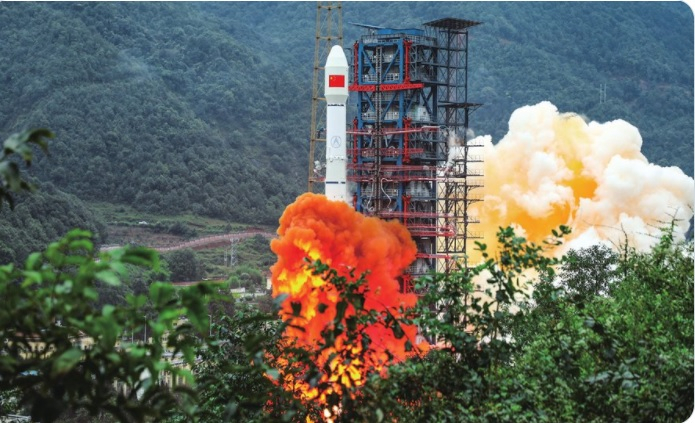Amid the US-China tensions, Beijing launched Shijian-21 satellite on October 24, atop a Long March-3B carrier rocket from Xichang Satellite Launch Center in Southwest China. Experts have expressed concerns over this development as the new satellite can be used as a weapon capable of grabbing and crushing American satellites.
A Long March-3B carrier rocket ripped through the sky launching the Chinese Shijian-21 satellite, to its planned Geostationary Earth Orbit successfully. According to China Aerospace Science and Technology Corp, Beijing's state-run space company, the satellite is "tasked with demonstrating technologies to alleviate and neutralize space debris." CASC did not disclose the mission of Shijian 21, but the Chinese state media Xinhua reported that Shijian-21 will "test and verify space debris mitigation technologies."
A Robotic Satellite Launch
This was China's 39th orbital launch of the year. It also marked the 393rd flight of the Long March carrier rocket family. CASC said the Shijian 21 satellite was built by the Shanghai Academy of Spaceflight Technology, part of the government-owned space industry.
The Sunday mission comes after a suspected recent test of a new hypersonic missile. China denied reports that it tested a nuclear-capable hypersonic missile earlier this year, insisting that it was a routine space vehicle and not an addition to its air weaponry. Beijing said, "This was not a missile, this was a spacecraft, this is of great significance for reducing the cost of spacecraft use."

What is Space Debris?
Space junk, or space debris refer any piece of machinery or debris left by humans in space. It can refer to big objects such as dead satellites that have failed or been left in orbit at the end of their mission.
Human activities leave too many dead satellites and fragments of machinery discarded in Earth orbit. If left unchecked, space debris could pose significant problems for future generations — rendering access to space increasingly difficult, or at worst, impossible, according to The New York Times.
China's Arch-Rival America Has Already Expressed Concern
The launch is drawing attention from the U.S. government and other international space officials. China has a satellite with an arm – and America worries it could be used to snatch other spacecraft.
In April 2021, the commander of the U.S. Space Command, Air Force Gen. James Dickinson told Congress that spacecraft like the Shijian-21 is part of an effort by China to seek "space superiority through space and space-attack systems." He was concerned about China's ability to destroy other nations' satellites.
"One notable object is the Shijian-17, a Chinese satellite with a robotic arm," Gen. Dickinson said. "Space-based robotic arm technology could be used in a future system for grappling other satellites."
China says Shijian-17 is an experimental communication and broadcast services satellite with a few other bells and whistles like electric propulsion and space debris verification technology. However, it has the potential of maneuvering close to orbiting satellites and grabbing or crushing the spacecraft.
According to Gen. Dickinson, the co-orbital robotic spacecraft is part of a growing arsenal of space weaponry fielded by the Chinese military.
A U.S. congressional research report published in April stated China and Russia prefer "destroying the ability of adversary forces to operate effectively rather than physically eliminating them." These strategies appear to have been deployed through malware cyberattacks like Hafnium and Solarigate.









